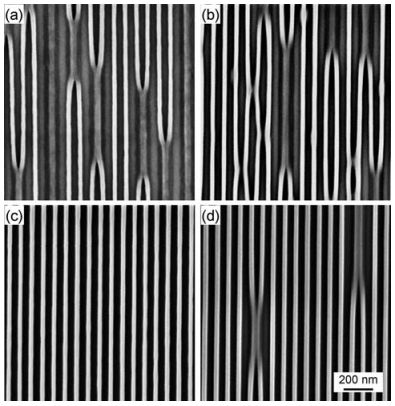Abstract
The effects of antiplasticization on the mechanical properties of dense arrays of poly(methyl methacrylate) (PMMA) beams less than 75 nm in width were investigated through observation of the deformation and collapse of the beams during lithographic processing. Collapse properties were characterized in terms of the critical aspect ratio of collapse (CARC) vs. the spacing between adjacent beams. Nanostructures blended with an antiplasticizing agent, tris(2-chloropropyl) phosphate (TCPP), exhibited a monotonic increase in CARC with increasing TCPP concentration, reaching a maximum at 5 wt% TCPP. Structures containing 5 wt% TCPP were observed to remain stable at aspect ratios up to 20% higher than those fabricated from pure PMMA. The CARC data were coupled with an elastic cantilever beam bending model to calculate the structures’ elastic moduli, and these results were compared to three-point flexural tests on bulk TCPP-antiplasticized PMMA. The model predictions suggest that the elastic modulus of PMMA nanostructures is dimension-dependent, decreasing as the beam width is decreased below 50 nm. Antiplasticization is observed over all length scales considered in this work, and can be used to improve the mechanical properties of bulk or nanoscopic PMMA to suit end uses where a stiffer material is desired.
